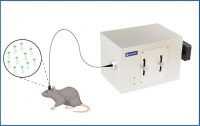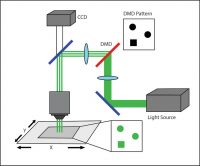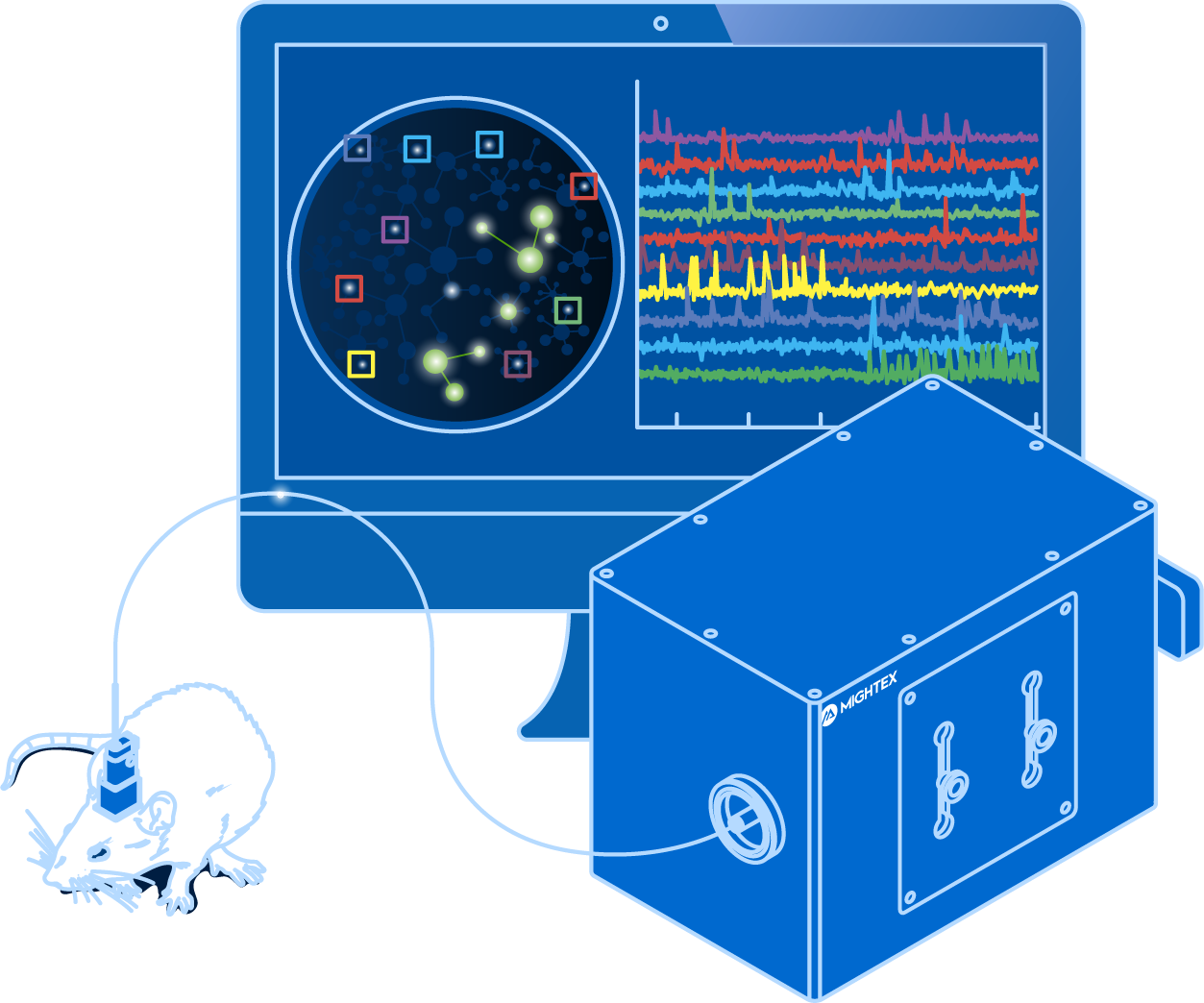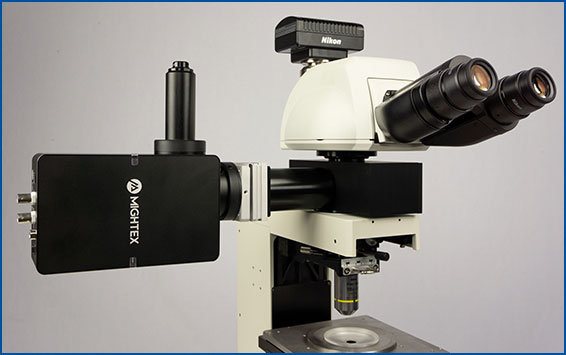If someone were to describe voltage imaging to you, it might sound quite simple.
When you dig deeper, you start to appreciate the complexity associated with the biology and equipment to perform voltage imaging.
You’re probably asking, what are the necessary components to perform voltage imaging?
Biological Components
Brains don’t naturally express genetically encoded voltage indicators (GEVIs), meaning there are biological steps required in order to perform voltage imaging in animals. First, you must express the genetic indicator in the brain; and second, depending on if you are performing in vivo experiments, you need to implant an imaging probe to collect fluorescent signals from the brain.
Genetic Sensor Expression
The first, and most important step, is achieving optimal GEVI expression in your animal model.
Mice are the most common animal model used for voltage imaging due to the advancement of genetic mice models (Daigle et al. 2018) and viral expression in the brain.
Viral expression involves injecting a virus encoding a GEVI in the brain. This virus is linked to a gene of interest to target expression in a specific cell-type.
A crucial step associated with viral expression is testing varying dilutions of the virus to obtain optimal expression in the brain (Resendez et al. 2016). Too little expression can lead to no signal, and over-expression can lead to high fluorescence background noise – or even cell death!
Neuroscientists employ viral expression to regulate GEVI expression. This is useful because expression can vary depending on the brain region, cell-type, or virus. In addition, neuroscientists can use viral expression to express GEVIs in brain projections to map neural circuits across brain regions.
Imaging Probe (For In Vivo Experiments)
After successful GEVI expression, you need to access the fluorescent signal inside the brain for in vivo experiments. But how can you see into the brain when it’s covered by both skin and skull?
Generally, this involves surgically implanting an imaging probe into the brain where the GEVI is expressed. There are three types of probes (optical cannula, cortical window, GRIN lens) that are used for voltage imaging.
Optical cannulas enable light to be delivered to and collected from the brain. These probes are used in Fiber Photometry experiments. Due to their design, optical cannulas are only capable of collecting a population signal, providing little or no spatial resolution to distinguish individual cells.
In contrast, cortical windows replace a large portion of the skull with a glass window. Neuroscientists employ cortical windows when imaging a large cortical region on the surface of the brain. Combined with a camera, cortical windows provide access to the cortex for single-cell resolution recordings.
Lastly, a GRIN lens is a microendoscopic probe that can be implanted in the brain to image deep regions of the brain (up to 8mm) with single-cell resolution. GRIN lenses differ in lengths, enabling neuroscientists to image both shallow and deep brain regions. To minimize tissue damage, scientists usually use GRIN lenses with relatively small diameters (e.g. 0.5mm ~ 1mm). As a result, imaging with GRIN lenses usually provides a relatively small field of view, especially compared to cortical windows.

Comparison between imaging with a GRIN lens and optical cannula.
Equipment Components
Now that you have all biological components setup, including optimal GEVI expression and imaging probe implantation, if necessary, you need equipment to record fluorescent signals.These are the main components required for voltage imaging:
Imaging System
You will select your imaging system based on the sample being studied. There are pros and cons to each which is related to the biological and technological constraints, but each system is designed for a specific application. Here are four potential imaging systems that can be used for voltage imaging:
- One-photon microscope for slice imaging, such as Mightex’s OASIS Micro.
- Two-photon microscope for in vivo head-fixed experiments
- Mesoscope for in vivo head-fixed large field of view experiments, such as Mightex’s OASIS Macro
- Optical fiberscope for in vivo freely-behaving experiments, such as Mightex’s OASIS Implant.

Mightex’s OASIS Implant is a system for freely-behaving or head-fixed voltage imaging.
Imaging Device
You need to detect and analyze fluorescent signals from the brain. This is made possible using an imaging device. Three types of imaging devices are used for in vivo imaging systems: 1) scientific camera, 2) PMT, and 3) photodetector. Which imaging device is used is somewhat dependent on the voltage imaging application.
If you’re using a scientific camera for voltage imaging, it is necessary to select a camera with a high-frame rate to capture signal fast enough and high-sensitivity to detect weak signals that may come from voltage imaging (Knopfel & Song, 2019; Yang & St. Pierre, 2016).
Successful voltage imaging is a balancing act between biology and equipment. Luckily, both the biology and equipment are constantly being optimized for better performance and ease of use.
Light Source and Filter Set
You need to illuminate and collect fluorescent signals from the brain to perform voltage imaging. GEVIs function by generating fluorescence signals, such that they have an excitation and emission spectrum (Quicke et al., 2019). To excite GEVIs and collect the emitting signal you require two components: a light source and dichroics/filters.
For excitation of the GEVI, LED light sources or lasers may be employed, depending on the experiment. For example, voltage imaging signal may require high optical power to detect it, so it is important to select a light source that has the appropriate output for the probe you are studying (Knopfel & Song, 2019; Yang & St. Pierre, 2016).
Importantly, the correct excitation wavelength must be selected, and this is where the second component is necessary: dichroics and filters allow proper transmission of the correct excitation wavelength and transmission of the correct emission signal to the imaging device.
DMD (Digtial Micromirror Device)
A DMD (digital micromirror device), such as Mightex’s Polygon DMD Pattern Illuminator, enables scientists to control precisely which areas on the sample the light will illuminate. The problem with using a standard wide-field light source for voltage imaging is it illuminates the entire sample, and this may lead to strong fluorescence background noise and fast photobleaching of the sample, affecting the signal quality and length of the experiment (Adam et al., 2019).
In order to avoid these problems, scientists have recently employed DMDs to focus light onto the cells they are studying to prevent these problems. With a DMD to focus the light, you can improve signal quality by reducing background fluorescence and reduce photobleaching by only direct light to the specific areas of interest on the sample (Adam et al., 2019). As a result, DMD pattern illuminators, such as Mightex’s Polygon, may become an important technology to overcome the biological limitations of GEVIs.

How a DMD setup controls illumination on the sample.
Next Post
All-Optical Electrophysiology: Integration of Optogenetics and Voltage Imaging





